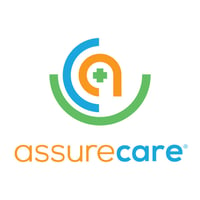
Utilization Management
Verify eligibility, optimize reviews, and streamline appeals and grievances.

Utilization Management
Verify eligibility, optimize reviews, and streamline appeals and grievances.

Care Management
Enable preventative care, manage medical interventions, and efficiently report on program outcomes.

Medication Management
Perform and bill medical services, ensure medications are safe and effective, and identify ways to improve care.

Quality Management
Improve outcomes, lower costs, and adhere to standards, such as HEDIS, Stars, and PQA.

Specialty Pharmacy

The healthcare sector is constantly searching for new methods to improve patient care. In the last decade, it has brought us various integrated modern technology and advanced modes of treatment for diverse patient conditions. One such significant advancement is Patient-Generated Health Data (PGHD). From developing mobile applications to manufacturing intelligent wearable devices, consumer health technologies have advanced significantly, allowing patients the freedom to collect health-related data outside the clinical setting.
What is Patient-Generated Health Data (PGHD)?
The Office of the National Coordinator for Health Information Technology (ONC) defines PGHD as, “health-related data created, recorded, or gathered by or from patients (or family members or other caregivers) to help address a health concern.” PGHD includes patient-reported information collected through surveys and data produced by remote monitoring devices, mobile health applications, and wearable devices. PGHD can consist of, but is not limited to:
Integrating PGHD into an EHR
When PGHD is integrated into an Electronic Health Record (EHR) software, clinicians can use it to make more informed clinical decisions regarding patient care. Clinicians can integrate PGHD manually by entering it into their EHR when they see patients. Patients can directly upload PGHD data using patient portals either manually or via interoperability between devices and EHRs or portals.
The Benefits of Using PGHD
The Challenges of Using PGHD
Lack of interoperability and data standards can make it difficult to collect data into one EHR platform. Some devices and platforms may not be compatible with each other yet, making the collection of PGHD a more manual process. Privacy and security are another concern of patients. When patients share their health information with clinicians, they expect their data to be safeguarded from unauthorized access. However, due to the lack of interoperability and standards, it might be challenging to ensure the security of PGHD.
Despite these challenges, PGHD has the potential to transform healthcare by making it more patient-centered and data-driven. When used correctly, PGHD can improve the standards of patient care delivery.
Where Do We Go From Here?
With improved communication, more complete data, earlier intervention, improved self-management, and increased patient engagement, the use of PGHD in outpatient clinics may have the potential to enhance care for those who are disproportionately impacted by chronic illness and for those with higher social risk factors such as low income, food insecurity, and housing instability.
iPatientCare offers a robust Electronic Health Record and is committed to providing patients with the best possible care. Our EHR software helps clinicians collect, store, manage and share patient data more efficiently and securely. It also allows patients to upload their PGHD health data, which their clinicians can access. Contact us today to learn more about our EHR software and how it can benefit your healthcare organization.

AssureCare
AssureCare® is a leading provider of integrated population care management software for healthcare and human services organizations. For nearly two decades, AssureCare has served the healthcare industry.